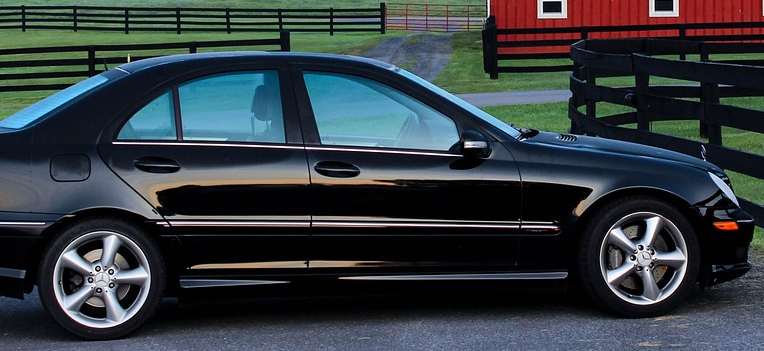Selecting the right hinges is a crucial aspect of any construction, renovation, or furniture project. A hinge not only ensures smooth functionality but also contributes to the longevity and aesthetic appeal of doors, cabinets, gates, and panels. Among the available options, SS hinges—stainless steel hinges—are highly favored for their strength, corrosion resistance, and versatility. This guide will help you understand how to choose the right SS hinges for your specific project, ensuring both durability and style.
Why SS Hinges Are a Smart Choice
SS hinges are made from stainless steel, an alloy of iron, carbon, and chromium. This combination provides exceptional durability, corrosion resistance, and a polished appearance. Unlike traditional iron or brass hinges, SS hinges can withstand moisture, heavy usage, and harsh environmental conditions without rusting or losing strength.
The smooth operation of SS hinges makes them suitable for residential, commercial, and industrial applications. They are particularly useful in areas prone to humidity, outdoor exposure, or frequent use, offering long-lasting reliability and a modern aesthetic.
Factors to Consider When Choosing SS Hinges
Choosing the right SS hinges requires careful consideration of several key factors:
1. Application Type
The first step is to identify the application. Are you installing doors, cabinets, gates, or windows? The type of application determines the hinge design and size.
- Residential Doors: Butt hinges or concealed hinges work well for standard doors.
- Cabinets and Furniture: Concealed or small butt hinges provide a sleek, invisible finish.
- Gates and Heavy Panels: Strap hinges or continuous hinges offer added strength and support.
- Industrial Equipment: Heavy-duty SS hinges can support machinery doors and safety panels.
Understanding the application ensures you select a hinge that provides the necessary support and functionality.
2. Weight and Size of the Door or Panel
SS hinges must be capable of supporting the weight of the door or panel. Heavier doors require larger or multiple hinges to prevent sagging or misalignment over time. For lighter doors and cabinets, smaller SS hinges are sufficient and help maintain a clean, proportionate appearance.
3. Material Grade
SS hinges come in different grades of stainless steel, typically 304 and 316:
- Grade 304: Ideal for general indoor use and moderately humid environments.
- Grade 316: Offers superior corrosion resistance, suitable for outdoor installations or areas with high exposure to moisture and chemicals.
Choosing the right grade ensures the hinge remains durable and rust-free in its intended environment.
4. Hinge Type
Different types of SS hinges serve specific purposes:
- Butt Hinges: Commonly used for doors and cabinets; easy to install.
- Concealed Hinges: Perfect for modern furniture; invisible when closed.
- Spring Hinges: Self-closing, ideal for fire doors or security doors.
- Continuous Hinges (Piano Hinges): Provide uniform support for long doors or panels.
- Strap Hinges: Support heavy gates and add a rustic or industrial look.
Selecting the right type ensures both smooth operation and aesthetic harmony.
5. Finish and Style
SS hinges are available in various finishes, including polished, satin, brushed, and antique. For visible installations, the finish should complement the overall design theme. Modern homes often favor polished or satin finishes, while rustic or traditional interiors may benefit from antique finishes.
6. Installation Method
SS hinges can be surface-mounted or mortised into the door and frame. Mortised hinges offer a flush and neat appearance, while surface-mounted hinges are easier to install but may be more visible. Consider the level of precision you want and the available installation space.
7. Frequency of Use
High-traffic doors, gates, or industrial panels require hinges that can withstand frequent opening and closing. Heavy-duty SS hinges or continuous hinges are ideal for these applications, while standard hinges are sufficient for occasional use.
Advantages of Choosing the Right SS Hinges
Selecting appropriate SS hinges provides several benefits:
- Durability: Stainless steel resists bending, breaking, and wear over time.
- Corrosion Resistance: Ideal for humid, outdoor, or coastal environments.
- Low Maintenance: Minimal cleaning and lubrication keep them in top condition.
- Aesthetic Appeal: Various finishes enhance modern or traditional designs.
- Versatility: Suitable for residential, commercial, industrial, and outdoor projects.
Maintenance Tips for Longevity
Even the best SS hinges require some care to ensure they last:
- Regular Cleaning: Wipe with a damp cloth to remove dirt and dust.
- Lubrication: Apply a light oil or silicone-based lubricant to the hinge pin for smooth movement.
- Alignment Checks: Ensure screws remain tight and hinges are properly aligned to prevent sagging.
- Avoid Overloading: Do not exceed the weight capacity of the hinge to prevent premature wear.
Conclusion
Choosing the right SS hinges is more than just selecting a piece of hardware—it affects the functionality, durability, and style of doors, cabinets, gates, and panels. By considering factors such as application type, weight, material grade, hinge type, finish, installation method, and frequency of use, you can ensure your hinges perform optimally and complement the overall design of your project.
Whether you are working on a modern home renovation, industrial installation, or custom furniture design, investing in high-quality SS hinges provides reliability, longevity, and aesthetic appeal. With the right choice, your doors and panels will operate smoothly for years while maintaining a polished, professional look.

